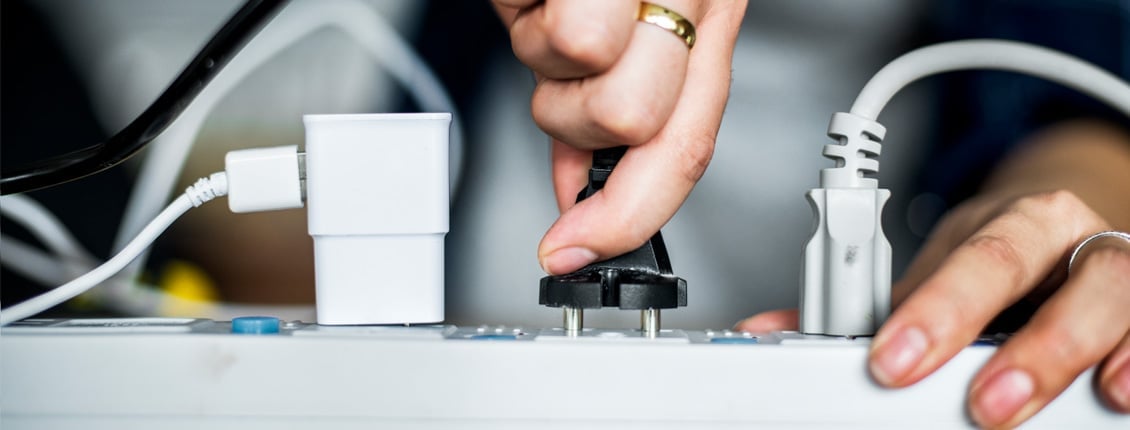
Protecting and Connecting Your Customer’s Electronics
Computers, hard drives, phones, and other valuable electronics can be damaged by power surges—which is why surge protectors are a necessity in the digital age. But what exactly is a surge protector? And do surge protectors really work? Let’s answer these questions and more as we learn about choosing the best surge protector.
Surge Protector Facts
Why have a surge protector? What do they do? What is a power surge? Can surge protectors really protect electronics? Let’s tackle these questions.
What Is A Surge Protector? How Do Surge Protectors Work?
Put plainly, a surge protector is an electrical device that protects equipment from power surges and voltage spikes by blocking voltage over a safe threshold—which is usually around 120 volts. If the voltage exceeds this threshold, then the protector shorts to ground the surge.
Do Surge Protectors Work?
Let’s be frank: no piece of equipment can protect against the most powerful surges, such as those caused by a close or direct lightning strike. But they do protect against most power surges, preventing damage to important electronics and accessories.
What Is A Power Surge?
A power surge is a boost in an electrical charge through electrical circuitry. They’re fast and short, but potentially damaging to all manner of household or business electronics.
Types of Surge Protectors
There are 4 main types of surge protectors: primary, secondary, power strips, and uninterrupted power supply (UPS).
Primary Surge Protectors
Unless you work in construction or are an electrical engineer, you’ll never have to deal with—and probably won’t notice—primary surge protectors. These surge protectors meet power lines where they enter a building. While these are incredibly important pieces of equipment, chances are you won’t ever have to deal with these.
Secondary Surge Protectors
Secondary surge protectors are the traditional surge protectors you’re used to. These plug directly into outlets, and while they obviously aren’t as powerful as primary protectors, they’re convenient and easy to use.
Power Strips
Power strips are often used in small offices and homes and are a subset of secondary protectors. They come with multiple outlets and cut power if there’s a surge.
UPS
UPS protectors are also secondary surge protectors but come in a variety of styles. The biggest difference between a UPS and a power strip or normal secondary surge protector is that a UPS contains a battery. This means that in the event of a power surge, a UPS will not only protect electronics, but it will keep them powered and on.
Choosing the Best Surge Protector
So how do you help your customers choose the best surge protector?
The easiest and most helpful way to do this is to ask them what they’re trying to protect. If they’re simply trying to protect a small device like a phone charger, a small secondary charger will do just fine.
Are they looking to protect multiple devices? Perhaps they have a home office setup, or many kitchen appliances they need to protect. If so, a power strip is ideal for their needs.
Are they buying to protect an entire office, multiple floors of a building, or an entire company? A UPS is going to both protect their devices and keep them powered so that they don’t have to worry about losing power in the middle of a work day.
Protect and Power
Choosing the best surge protector is totally dependent on what your customers need. Be it a small protector, and power strip, or a powerful UPS, Petra and our vendor partners have you covered.
Check out our entire lineup of surge protectors at petra.com.
